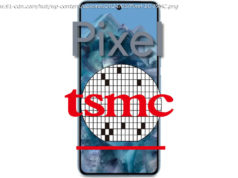Opponents of self-driving cars are using an obscure rule to set a harmful roadblock
With passage of the SELF DRIVE Act in the House, and Senate action expected soon, this bipartisan action has set the right tone for a self-driving future. Yet opposition groups have begun to mischaracterize an obscure but critical portion of auto safety regulations: Exemptions.
In the past, the exemptions process created a pathway to deploy new safety features that are now standard on many vehicles, including emission-reduction measures. It enables automakers to deploy new technology, before our bureaucracy goes through the years-long process of formally updating regulations.
However, under the guise of safety, critics of autonomous vehicle legislation have misconstrued this process and are trying to limit this lane for developers of AV technology. The term “exemption” should instead be considered a “modern safety certificate” to more accurately capture the process and intention behind the responsible, real-world deployment of innovative vehicle designs—which AV developers should be encouraged to pursue.
Today’s cars have more computing power than NASA had during the Apollo mission; we cannot rely on a regulatory framework that predates the moon landing to halt this revolution in transportation.
Exemptions are the only reason that safe and petroleum-free hydrogen vehicles are now available to consumers. The SELF DRIVE Act would create a similar pathway for AVs until the U. S. Department of Transportation (DOT) can issue standards specific to AVs. This is a common-sense approach.
Despite the name, the exemptions process does not release vehicles from safety standards. When processed by the DOT, companies are required to prove their vehicles are as safe as existing designs, providing reams of data to substantiate those claims. Vehicles that undergo this scrutiny are among the most vetted cars on our streets.
Under current law, automakers have two choices to demonstrate vehicle safety. The first is to self-certify that they meet established standards. But when automakers develop technologies or innovative designs that are beyond the scope of those standards, they can utilize this second path, exemptions, for a limited number of vehicles.
Exemptions enable companies to think outside the traditional vehicle box, allowing designers to rethink automobile design from seat positioning to size and shape. Only 1 percent of the energy currently used to power an automobile actually moves the passenger from Point A to Point B. Everything from efficiency and light-weighting to right-sizing cars and improving handicapped access can be redesigned from the ground up.
Expanding exemptions is necessary to unlock the potential of AVs. The upside cannot be ignored: Saving many of the 40,000 lives lost on roadways every year; improving transportation access for the disabled, seniors, disabled veterans and others; and reducing congestion, pollution and our dangerous dependence on oil.
These are bold and far-reaching goals, which leave little space for the type of misinformation and hyperbole that can threaten this process. It’s time to maximize the benefits and ensure that at the core of AV policy, we remove prescriptive regulatory obstacles that have nothing to do with safety.
The House and Senate should ignore the inaccurate calls and focus instead on creating the best route for timely, widespread, safe deployment of life-saving AV technology.
Mark Platshon is Managing Director of Icebreaker Ventures and former Senior Advisor to BMW i-ventures. Robbie Diamond is President and CEO of Securing America’s Future Energy (SAFE). They wrote this for The Mercury News.






